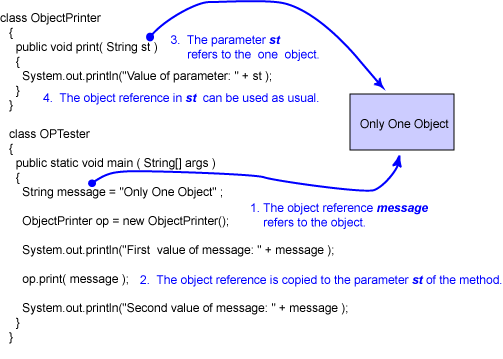Only One Object
The program works as you expect.
The diagram shows what is
happening.
The main() method creates a String object that
contains the characters "Only One Object."
A reference to this object is held in the reference variable messsage.
A reference to an object is a way to find the object in main memory. If a method has a reference to an object, then in can use that object.

|
Now an ObjectPrinter object is created and
a reference to it is placed in op.
In the statement op.print(message),
the reference to the object is passed as the value
of the parameter.
This is just like call by value with a primitive data type,
but now the value is a reference.
The invoked method print() uses its formal parameter
st to find the object,
and print out the object's data.